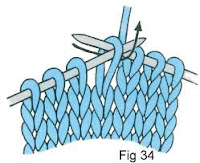 These baby hats are sooo cute!! I saw a picture of something that looks exactly the same on Pinterest but there wasn't a pattern to go with the picture. I loved it so much that I just decided to make a pattern up myself. The giganticness of the bow is the best part. The yarn I used is machine washable and relatively inexpensive and it's really soft too. In this picture the white hat with the raspberry colored bow looks a lot smaller but both hats are exactly the same size. I'm not really sure what age babies these would be good for. I didn't really think that part out.
These baby hats are sooo cute!! I saw a picture of something that looks exactly the same on Pinterest but there wasn't a pattern to go with the picture. I loved it so much that I just decided to make a pattern up myself. The giganticness of the bow is the best part. The yarn I used is machine washable and relatively inexpensive and it's really soft too. In this picture the white hat with the raspberry colored bow looks a lot smaller but both hats are exactly the same size. I'm not really sure what age babies these would be good for. I didn't really think that part out. Materials:
Dk weight yarn in 2 colors (for two hats I used less than 127 yards)
Size 6 straight needles
Yarn needles
Yarn I Used:
Sublime baby cashmere merino silk dk in shades 0003 and 0217
Directions:
Hat:
CO 72sts
Work in K2, P2 rib for 6 rows
Work in stockinette stitch for 6 rows
Change color
Stockinette stitch for 6 rows
Change color
Stockinette stitch until entire piece measures 4 1/2 inches
K5, (k2tog, k9) repeat directions in ( ) across the row
Purl
K4, (k2tog, k8) repeat directions in ( ) across the row
Purl
Repeat decreasing the amount of stitches before each decrease until you get to k2tog all the way across. Cut they yarn leaving about 10 inches and bring it through the stitches. Take all the stitches off the needle and pull the yarn tight so they all come together. Use the same yarn to sew the seam on the side of the hat. Weave in the ends to hide them.
Bow:
CO 35
2 Rows K2, P2 rib
22 Rows Stockinette stitch. Purl the 1st and last stitch of every knit row to prevent rolling
2 Rows K2, P2 rib
Bind off
Cut a piece of yarn about 15 inches. Pinch the center of the bow with the rib rows on the top and bottom and wrap the yarn around the middle and use the 2 ends of the yarn to attach it to the stripe on the hat. Cut some smaller pieces of yarn and use them to tack the sides of the bow to the hat so they don't flop over. Make sure the pieces used for securing are tied tight so they don't come undone.
.jpg)
.jpg)
.jpg)





.jpg)
.jpg)
.jpg)
.jpg)

.jpg)